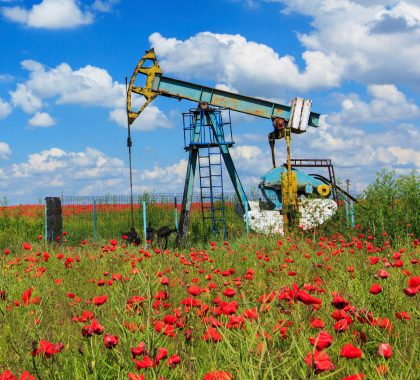Temporary air emission spikes around oil and gas wells in the Eagle Ford shale in Southwest Texas are the result of operational inefficiencies and not inherent to the process of hydraulic fracturing or fracking, according to a new study by researchers at the University of Texas Arlington (UTA).
The study, published in the August edition of Science of the Total Environment, found ambient levels of benzene, toluene, ethyl benzene, and xylene compounds (BTEX) near fracking drilling sites were below federal safety standards.
In a UTA press statement, Kevin Schug, director of the University’s Collaborative Laboratories for Environmental Analysis and Remediation, or CLEAR lab, said “These variable contamination events, attributable in many cases to specific natural gas flaring units, condensation tanks, compressor units, and hydrogen sulfide scavengers, indicate that mechanical inefficiencies, and not the inherent nature of the extraction process as a whole, result in the release of these compounds into the environment.”
Emissions ‘Within Federal Limits’
“These results therefore suggest that air contamination events from fracking can be monitored, controlled, and reduced,” Schug said. “We hope that this research would help producers and other upstream operators improve the efficiency and reduce the environmental impact of unconventional drilling.”
Even with the emissions spikes the researchers found inefficient fracking operations do not threaten peoples’ health.
“We found ambient BTEX compound emissions in and around fracking sites are within the federally mandated acceptable limits for short-term exposure,” Schug said.
Tim Benson, a policy analyst in the government relations department of The Heartland Institute, says there is no scientific justification for banning fracking, or regulating it out of existence.
“Fracking has transformed the energy outlook of the United States over the past decade, and the rise of shale gas as a replacement for coal has been primarily responsible for the United States now enjoying its lowest level of carbon-dioxide emissions since 1989,” said Benson, “Drilling is currently being conducted in Texas in a safe and responsible manner, and it has transformed the energy outlook of the Lone Star State for the better.”
Kenneth Artz ([email protected]) writes from Dallas, Texas.
INTERNET INFO
Tim Benson , “Research & Commentary: Study: South Texas Fracking Not a Risk to Air Quality,” The Heartland Institute, September 1, 2016: https://heartland.org/publications-resources/publications/research–commentary-study-south-texas-fracking-not-a-risk-to-air-quality





